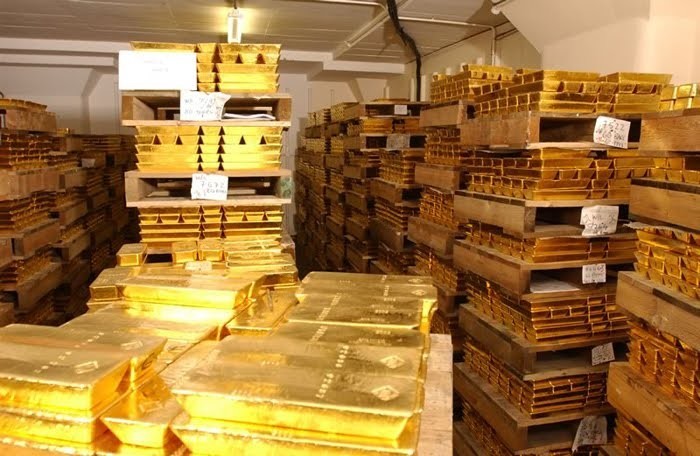Is Russia Using Gold To Get Around Sanctions?
THANK YOU FOR POSTING A REVIEW!
Your review was sent successfully and is now waiting for our staff to publish it.

(March 28th, 2022 - Hamza Fareed Malik)
- It's difficult to see right now whether Russia is using gold to skirt sanctions, UBS strategist Joni Teves said.
- It will be months before changes in Russian central-bank gold holdings can be checked, she told CNBC.
- Any sales of Russia's $140 billion gold stockpile could help bolster the beleaguered ruble.
It's difficult to see right now whether Russia is using its gold reserves to skirt international sanctions, a UBS precious metals strategist has said.
Western leaders on Thursday clamped down on Russia's ability to sell its gold reserves to support its economy, which is under pressure from financial sanctions imposed soon after the country's war on Ukraine.
The Biden administration has said there are signs Russia's central bank was looking to use its gold reserves to prop up the ruble, which plunged to less than a penny in the wake of the invasion. The UK has also shared its concerns about potential evasion.
Asked by CNBC whether there was any evidence of this, UBS strategist Joni Teves suggested it will be months before any changes in the Russian central bank's gold holdings can be checked.
She noted there are several steps that need to happen for the central bank to sell gold.
"It will be difficult to actually see that impact in the market immediately, given the several steps," Teves said in a CNBC interview Monday.
"And also given that even in normal situations, it takes a couple of months until we see the report of changes in central bank holdings to the IMF."
Russia has been increasing its gold holdings over the last decade or so, she noted. The country has the world's fifth-largest gold stockpile at roughly 2,300 tons, estimated to be worth up to $140 billion.
It has been building up the stash of the precious metal as a kind of an economic insurance policy, but sanctions have made it difficult for Russia to find buyers.
"Our sense is that the recent events if anything continue to reinforce that trend — among emerging-market central banks, in particular — of diversifying their reserves into gold," Teves said.
Earlier in March, Russia's central bank suspended purchases of gold from banks as the collapse of the ruble helped spur demand from consumers for the precious metal.
Teves suggested that investors seeking shelter from the conflict, now in its second month, are setting the direction for gold prices.
"From the beginning of February, safe-haven flows have really been the main driver of a gold price action," she said. "We do think that this continues to be the main driver of gold prices, especially if you look at it from a long-term perspective."
She said the relationship between gold and real rates is starting to normalize, after breaking down somewhat earlier in the year.
Gold futures fell 0.8% to $1,937.90 per ounce Monday, thanks to the prospect of aggressive interest rate hikes by the Federal Reserve this year. But its appeal was also dulled hopes for progress in face-to-face ceasefire talks between Russia and Ukraine this week.
-
Switzerland Emerges As India’s Top Import Destination In April With Soaring Gold Imports By
Mint State Gold
May 16 2024
-
Silver Surges To Highest Settlement In 11 Years Gold Jumps As U.S. Inflation Cools By
Mint State Gold
May 16 2024






